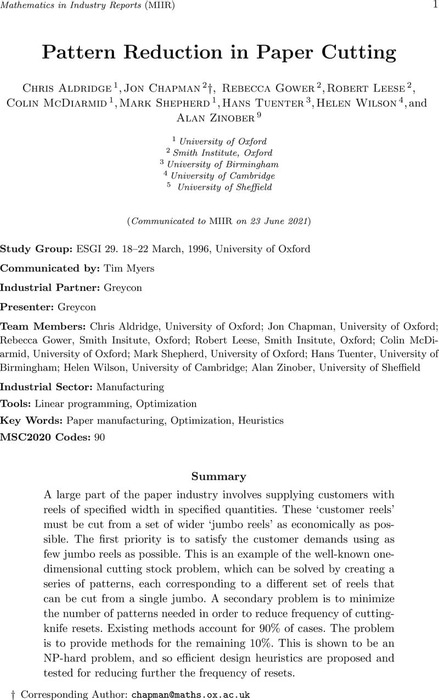Abstract
A large part of the paper industry involves supplying customers with reels of specified width in specified quantities. These 'customer reels' must be cut from a set of wider 'jumbo reels' as economically as possible. The first priority is to satisfy the customer demands using as few jumbo reels as possible. This is an example of the well-known one-dimensional cutting stock problem, which can be solved by creating a series of patterns, each corresponding to a different set of reels that can be cut from a single jumbo. A secondary problem is to minimize the number of patterns needed in order to reduce frequency of cutting-knife resets. Existing methods account for 90% of cases. The problem is to provide methods for the remaining 10%. This is shown to be an NP-hard problem, and so efficient design heuristics are proposed and tested for reducing further the frequency of resets.
Content




